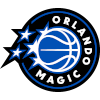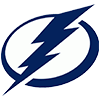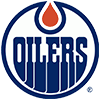Before we begin, I wanted to give a quick shoutout to two new baseball columns that debuted at RotoWire this week. Lineup Lowdown by Ryan Boyer takes a look at recent playing time changes around the league, while Imminent Arrivals by Chris Crawford breaks down the top prospects for redraft leagues. Both will be weekly features going forward.
The second half of April may as well be known in the fantasy baseball community as "stabilization point explainer season." At this point of the year, we've seen enough that one hot series for a hitter or one particularly excellent or awful outing for a pitcher no longer completely dominates their statline. Chris Bassitt, for example, was profiled in this column a few weeks ago after a disastrous first outing gave him a 24.30 ERA, but he's already cut it down to a disappointing but far less noteworthy 4.82.
It doesn't take much experience as a fantasy player to know not to overreact to the tiniest of samples, but we're now entering the time of year where things start to get a bit more ambiguous. Stabilization points (which you can read about in the FanGraphs glossary if you're looking for a full breakdown) theoretically help with that. For a given statistic, there's a number of plate appearances, innings pitched, swings or pitches at which that stat becomes sufficiently meaningful, and everyday players are already starting to pass that point for stats such as strikeout rate.
But there are two ways in
Before we begin, I wanted to give a quick shoutout to two new baseball columns that debuted at RotoWire this week. Lineup Lowdown by Ryan Boyer takes a look at recent playing time changes around the league, while Imminent Arrivals by Chris Crawford breaks down the top prospects for redraft leagues. Both will be weekly features going forward.
The second half of April may as well be known in the fantasy baseball community as "stabilization point explainer season." At this point of the year, we've seen enough that one hot series for a hitter or one particularly excellent or awful outing for a pitcher no longer completely dominates their statline. Chris Bassitt, for example, was profiled in this column a few weeks ago after a disastrous first outing gave him a 24.30 ERA, but he's already cut it down to a disappointing but far less noteworthy 4.82.
It doesn't take much experience as a fantasy player to know not to overreact to the tiniest of samples, but we're now entering the time of year where things start to get a bit more ambiguous. Stabilization points (which you can read about in the FanGraphs glossary if you're looking for a full breakdown) theoretically help with that. For a given statistic, there's a number of plate appearances, innings pitched, swings or pitches at which that stat becomes sufficiently meaningful, and everyday players are already starting to pass that point for stats such as strikeout rate.
But there are two ways in which stabilization points are often misused, both of which involve giving them more weight than they otherwise deserve. The first is to treat the specific thresholds as if they have some special relevance. Those thresholds are the points at which signal outweighs noise, but a 51/49 split in favor of signal shouldn't be treated by fantasy players as meaningfully different than a 51/49 split in the other direction. It should, on the other hand, be treated as meaningfully different than a 90/10 advantage to signal. It's not the case that you should go from ignoring a stat completely to endorsing it wholeheartedly when it hits its stabilization point. Rather, you should go from, "Huh, maybe there's something there," to "Huh, maybe there's something there," in an imperceptibly brighter tone of voice.
The other common mistake is thinking that stabilization points mean a stat is now predictive. Instead, what they really imply is that a stat is sufficiently descriptive. Just because a hitter cut his strikeout rate from 35 percent to 25 percent over his first 80 plate appearances doesn't necessarily mean we should predict him to do so over his next 80 or for the remainder of the season. He may have legitimately improved his skills, but that improvement may have been exaggerated by good luck and/or could just as easily reverse itself. If we're looking to predict the future, projections are still the way to go.
That said, there's undoubtedly value in stats being more descriptive, even if they're not strictly speaking predictive. A better strikeout rate through nearly a month of games hints at a potential skill change at the very least and is much more encouraging than the alternative. A similar concept applies to the expected statistics that have arrived in recent seasons thanks to statcast data. Those metrics aren't designed to be predictive, and they have a gap at the moment in that they don't consider spray angle. Still, they offer some descriptive value that can explain the kind of contact a hitter is making better than raw batting average can in many cases, and having better descriptive stats can aid in forming more accurate predictions.
Those ideas are relevant to many of the players featured in this week's article. These players have made themselves noteworthy not just through surface stats but by backing those up with strikeout and walk rates that are just starting to stabilize, or in other cases they've backed them up with strong expected stats. And while there's no way to guarantee their underlying numbers will remain at their new levels in the future, you'd still much rather target a player whose strong early performance comes with improvements in his peripherals.
RISERS
 Yandy Diaz, 1B/3B, Rays: What if this is the year Diaz finally starts lifting the ball? That's a sentence that could have been written at an point in the last five years, but, still, what if this is the year? His six homers in 22 games — already just three short of his mark from last year and eight shy of his career high — suggest that it might be. He's upped his average launch angle to 12.6 degrees, a hair above the league average of 12.4 degrees and more than double his career average of 5.4. If you prefer flyball rate, he's at 40.6 percent there, above both the league's overall 36.9 percent mark as well as his career average of 29.2 percent. The question, of course, is whether he'll keep this up. Per his rolling 15-game flyball rate courtesy of FanGraphs, we can see that this level of loft isn't entirely unprecedented for Diaz, but it's certainly rare:
Yandy Diaz, 1B/3B, Rays: What if this is the year Diaz finally starts lifting the ball? That's a sentence that could have been written at an point in the last five years, but, still, what if this is the year? His six homers in 22 games — already just three short of his mark from last year and eight shy of his career high — suggest that it might be. He's upped his average launch angle to 12.6 degrees, a hair above the league average of 12.4 degrees and more than double his career average of 5.4. If you prefer flyball rate, he's at 40.6 percent there, above both the league's overall 36.9 percent mark as well as his career average of 29.2 percent. The question, of course, is whether he'll keep this up. Per his rolling 15-game flyball rate courtesy of FanGraphs, we can see that this level of loft isn't entirely unprecedented for Diaz, but it's certainly rare:
Perhaps he'll level off again, just as he did after his previous peak in the second half of 2021. But even if he does, the rest of his skill set at the plate is strong enough that he's still likely to wind up as a profitable pick. When you combine a 13.3 percent strikeout rate, 12.2 percent walk rate and 58.0 percent hard hit rate, as he's done this season, you don't need to be much of a power hitter.
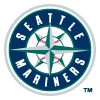 Luis Castillo, SP, Mariners: Perhaps this is the wrong week to feature Castillo, who's coming off his worst start of the season, but even that outing — which saw him allow three runs in five innings against the Cardinals on Saturday — featured eight strikeouts and was far from disastrous. He earns a mention here because of his excellent start to the season overall, as he's backed up his 1.52 ERA through five starts with a 1.64 FIP. His strikeout rate (30.4 percent) is a 10th of a point shy of his career high, while his 5.4 percent walk rate is a career best. He's also yet to allow a homer. A potential worry is his fastball velocity, which is sitting at 95.7 mph this year after averaging north of 97 mph for three straight seasons. His track record gives reason not to be concerned there:
Luis Castillo, SP, Mariners: Perhaps this is the wrong week to feature Castillo, who's coming off his worst start of the season, but even that outing — which saw him allow three runs in five innings against the Cardinals on Saturday — featured eight strikeouts and was far from disastrous. He earns a mention here because of his excellent start to the season overall, as he's backed up his 1.52 ERA through five starts with a 1.64 FIP. His strikeout rate (30.4 percent) is a 10th of a point shy of his career high, while his 5.4 percent walk rate is a career best. He's also yet to allow a homer. A potential worry is his fastball velocity, which is sitting at 95.7 mph this year after averaging north of 97 mph for three straight seasons. His track record gives reason not to be concerned there:
Year | FB velo, first five starts | FB velo, rest of season | Diff |
|---|---|---|---|
2018 | 95.2 | 95.9 | +0.7 |
2019 | 95.6 | 96.6 | +1.0 |
2020 | 97.4 | 97.5 | +0.1 |
2021 | 95.7 | 97.5 | +1.8 |
2022 | 95.9 | 97.3 | +1.4 |
2023 | 95.7 | TBD | TBD |
With the exception of 2020, when he arrived to the shortened season fully warmed up, Castillo has always eased his way toward his maximum velocity. That's given him a reputation as a slow starter, but this year, his relative lack of velocity hasn't hurt his results. If he's putting up these kinds of numbers in April, what will he do once he fully loosens up?
 Justin Steele, SP, Cubs: Steele was never much of a prospect and didn't become a major-league starter until after he turned 26, so it's perhaps understandable that he wasn't widely targeted despite his 3.18 ERA in 24 starts last season. Michael Kopech, Jared Shuster, Noah Syndergaard, Garrett Whitlock, Aaron Civale and Ross Stripling all went in the 25 picks ahead of him in the NFBC Main Event. Steele has outpitched them all and nearly everyone else this season, recording a 1.19 ERA while winning four of his first five starts for a suddenly competitive Cubs team. His ERA won't stay this good forever, as he's clearly been helped by a .205 BABIP and 91.3 percent strand rate, but his underlying numbers definitely back the idea that he's pitched quite well. All three of his 25.2 percent strikeout rate, 8.7 percent walk rate and 54.7 percent groundball rate represent improvements from last season, and all three beat the respective league average. Recent performances from the lefty include seven innings, three hits, two runs, one walk and eight strikeouts against the Dodgers in mid-April as well as 5.1 innings, three hits, no runs, two walks and five strikeouts against the Padres this Tuesday.
Justin Steele, SP, Cubs: Steele was never much of a prospect and didn't become a major-league starter until after he turned 26, so it's perhaps understandable that he wasn't widely targeted despite his 3.18 ERA in 24 starts last season. Michael Kopech, Jared Shuster, Noah Syndergaard, Garrett Whitlock, Aaron Civale and Ross Stripling all went in the 25 picks ahead of him in the NFBC Main Event. Steele has outpitched them all and nearly everyone else this season, recording a 1.19 ERA while winning four of his first five starts for a suddenly competitive Cubs team. His ERA won't stay this good forever, as he's clearly been helped by a .205 BABIP and 91.3 percent strand rate, but his underlying numbers definitely back the idea that he's pitched quite well. All three of his 25.2 percent strikeout rate, 8.7 percent walk rate and 54.7 percent groundball rate represent improvements from last season, and all three beat the respective league average. Recent performances from the lefty include seven innings, three hits, two runs, one walk and eight strikeouts against the Dodgers in mid-April as well as 5.1 innings, three hits, no runs, two walks and five strikeouts against the Padres this Tuesday.
 Jose Alvarado, RP, Phillies: It might not be technically correct to refer to Alvarado as the Phillies' closer, with Philadelphia seemingly having joined the growing ranks of teams who aren't locking themselves into traditional hierarchies, but there doesn't seem to be any question that he's the team's best reliever, which led to him earning three of the team's four saves last week. (Craig Kimbrel's save came after Alvarado pitched three times in four days.) With the way he's pitching at the moment, Alvarado would be the best reliever on nearly every team in the league. Through 10.1 innings this season, he's struck out 55.6 percent of the batters he's faced. He's yet to issue a walk and has allowed just three hits, giving him a 0.48 WHIP to go with his 0.87 ERA. While it's tough to buy into just 10 outings, Alvarado's success dates back to last season. He was demoted in late May after an awful start but rediscovered his cutter with Triple-A Lehigh Valley. Since he was recalled in mid-June of last year, the lefty owns a 1.49 ERA backed by a 45.4 percent strikeout rate and 7.6 percent walk rate.
Jose Alvarado, RP, Phillies: It might not be technically correct to refer to Alvarado as the Phillies' closer, with Philadelphia seemingly having joined the growing ranks of teams who aren't locking themselves into traditional hierarchies, but there doesn't seem to be any question that he's the team's best reliever, which led to him earning three of the team's four saves last week. (Craig Kimbrel's save came after Alvarado pitched three times in four days.) With the way he's pitching at the moment, Alvarado would be the best reliever on nearly every team in the league. Through 10.1 innings this season, he's struck out 55.6 percent of the batters he's faced. He's yet to issue a walk and has allowed just three hits, giving him a 0.48 WHIP to go with his 0.87 ERA. While it's tough to buy into just 10 outings, Alvarado's success dates back to last season. He was demoted in late May after an awful start but rediscovered his cutter with Triple-A Lehigh Valley. Since he was recalled in mid-June of last year, the lefty owns a 1.49 ERA backed by a 45.4 percent strikeout rate and 7.6 percent walk rate.
 Brandon Marsh, OF, Phillies: In his first two years in the majors, Marsh hit .248/.303/.374. Through 22 games this year, he's hitting .357/.444/.729. You don't need me to tell you that he isn't going to maintain a line anywhere near this excellent for the remainder of the year — a quick glance at his .488 BABIP should suffice — but the underlying numbers do indeed point to some encouraging growth from the 25-year-old center fielder. Specifically, Marsh has made big strides in his plate discipline, which is something worth paying attention to early in the season. Prior to this season, Marsh owned a 34.5 percent strikeout rate and a 6.7 percent walk rate. This year, he's striking out 28.4 percent of the time while walking at a 13.6 percent clip. That strikeout rate is still elevated, but for a player who has speed and defense as well as some power, a high strikeout rate can work, as long as it's not in Joey Gallo territory. Time will tell exactly how much of his contact improvement will stick, but it's exactly the sort of start you'd want to see for Marsh. It's earned him starts against the last two lefties the Phillies have faced, seemingly elevating him to a true everyday role.
Brandon Marsh, OF, Phillies: In his first two years in the majors, Marsh hit .248/.303/.374. Through 22 games this year, he's hitting .357/.444/.729. You don't need me to tell you that he isn't going to maintain a line anywhere near this excellent for the remainder of the year — a quick glance at his .488 BABIP should suffice — but the underlying numbers do indeed point to some encouraging growth from the 25-year-old center fielder. Specifically, Marsh has made big strides in his plate discipline, which is something worth paying attention to early in the season. Prior to this season, Marsh owned a 34.5 percent strikeout rate and a 6.7 percent walk rate. This year, he's striking out 28.4 percent of the time while walking at a 13.6 percent clip. That strikeout rate is still elevated, but for a player who has speed and defense as well as some power, a high strikeout rate can work, as long as it's not in Joey Gallo territory. Time will tell exactly how much of his contact improvement will stick, but it's exactly the sort of start you'd want to see for Marsh. It's earned him starts against the last two lefties the Phillies have faced, seemingly elevating him to a true everyday role.
 Josh Lowe, OF, Rays: Lowe and Marsh share many similarities. Both are 25-year-old, lefty-swinging outfielders with power and speed, but significant contact concerns. Lowe began the season lower on the depth chart (in his case, that's a pun, if you need a reminder on his pronunciation) and isn't as good of a defender despite similar speed, which made him much cheaper during draft season and keeps him comparably riskier today. That said, many underlying metrics point to Lowe's hot start as the more sustainable. He's hitting .328/.368/.625 with four homers and four steals in 68 plate appearances, cutting his strikeout rate all the way from 33.3 percent last season to 19.1 percent thus far. His .269 expected batting averages suggests a fair amount of overachievement, but even falling back to that number would keep him valuable if paired with 15 to 20 homers and steals. Playing time will always be a question for nearly every Ray, and he's yet to earn a start against a lefty this year, but he's become a near-everyday starter against righties and has undoubtedly earned it.
Josh Lowe, OF, Rays: Lowe and Marsh share many similarities. Both are 25-year-old, lefty-swinging outfielders with power and speed, but significant contact concerns. Lowe began the season lower on the depth chart (in his case, that's a pun, if you need a reminder on his pronunciation) and isn't as good of a defender despite similar speed, which made him much cheaper during draft season and keeps him comparably riskier today. That said, many underlying metrics point to Lowe's hot start as the more sustainable. He's hitting .328/.368/.625 with four homers and four steals in 68 plate appearances, cutting his strikeout rate all the way from 33.3 percent last season to 19.1 percent thus far. His .269 expected batting averages suggests a fair amount of overachievement, but even falling back to that number would keep him valuable if paired with 15 to 20 homers and steals. Playing time will always be a question for nearly every Ray, and he's yet to earn a start against a lefty this year, but he's become a near-everyday starter against righties and has undoubtedly earned it.
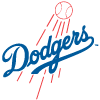 James Outman, OF, Dodgers: I didn't intend for this column to become so one-note, but Outman is the third consecutive 25-year-old outfielder who bats left-handed and pairs power and speed with contact questions. His big-league resume prior to the season consisted of just four games, well behind Marsh (204) and Lowe (54), but his 90 plate appearances pace the trio this year. He's started against every righty the Dodgers have faced this season as well as four of the seven lefties, earning his starts by hitting .316/.400/.709 with seven homers and a pair of steals. His strikeout rate (27.8 percent) is high but not to a problematic extent, though it does suggest he won't be a batting-average asset once his .383 BABIP comes down. Even his small sample so far has been enough to make the projection systems buy in. The projections available at FanGraphs called for a wRC+ between 88 and 105 before the season but now sit between 107 and 115. That's still not a star, and his batting average is still projected in the .230s, but there's a chance the algorithms just haven't caught up to a late bloomer who plays for a team known for late-blooming bats.
James Outman, OF, Dodgers: I didn't intend for this column to become so one-note, but Outman is the third consecutive 25-year-old outfielder who bats left-handed and pairs power and speed with contact questions. His big-league resume prior to the season consisted of just four games, well behind Marsh (204) and Lowe (54), but his 90 plate appearances pace the trio this year. He's started against every righty the Dodgers have faced this season as well as four of the seven lefties, earning his starts by hitting .316/.400/.709 with seven homers and a pair of steals. His strikeout rate (27.8 percent) is high but not to a problematic extent, though it does suggest he won't be a batting-average asset once his .383 BABIP comes down. Even his small sample so far has been enough to make the projection systems buy in. The projections available at FanGraphs called for a wRC+ between 88 and 105 before the season but now sit between 107 and 115. That's still not a star, and his batting average is still projected in the .230s, but there's a chance the algorithms just haven't caught up to a late bloomer who plays for a team known for late-blooming bats.
FALLERS
 Juan Soto, OF, Padres: Soto, who hit .301 across 2,003 plate appearances through the end of his age 22 season and earned Ted Williams comparisons, is hitting .188 through 107 trips to the plate this year. It's understandably caused significant worry among those who drafted him. The underlying numbers are mixed. His 56.1 percent hard-hit rate is the best mark of his career, while his 15.8 percent barrel rate is his second-best. His 20.6 percent walk rate remains stupidly high, giving him a .355 on-base percentage even while the hits aren't falling. A large portion of the blame for his struggles can seemingly be directed to his .218 BABIP, and if that number wasn't such an outlier at this stage (something that usually hints at bad luck over a small sample), he probably wouldn't be causing nearly as much concern. But there's also the matter of his typically excellent strikeout rate, which sits at 24.3 percent after he finished between 14.2 and 14.5 percent for three straight seasons. Soto is still younger than any of the three outfielders discussed previously in this article, and I'd trust someone with his hitting instincts to fight through this slump more than I'd trust just about anyone else, but that's a worrisome number. His selectiveness may have gone too far, as his swing rate on pitches in the zone (53.4 percent) is a career low.
Juan Soto, OF, Padres: Soto, who hit .301 across 2,003 plate appearances through the end of his age 22 season and earned Ted Williams comparisons, is hitting .188 through 107 trips to the plate this year. It's understandably caused significant worry among those who drafted him. The underlying numbers are mixed. His 56.1 percent hard-hit rate is the best mark of his career, while his 15.8 percent barrel rate is his second-best. His 20.6 percent walk rate remains stupidly high, giving him a .355 on-base percentage even while the hits aren't falling. A large portion of the blame for his struggles can seemingly be directed to his .218 BABIP, and if that number wasn't such an outlier at this stage (something that usually hints at bad luck over a small sample), he probably wouldn't be causing nearly as much concern. But there's also the matter of his typically excellent strikeout rate, which sits at 24.3 percent after he finished between 14.2 and 14.5 percent for three straight seasons. Soto is still younger than any of the three outfielders discussed previously in this article, and I'd trust someone with his hitting instincts to fight through this slump more than I'd trust just about anyone else, but that's a worrisome number. His selectiveness may have gone too far, as his swing rate on pitches in the zone (53.4 percent) is a career low.
 Jake McCarthy, OF, Diamondbacks: McCarthy was a popular target for those looking for steals this spring after he swiped 23 bags in 99 games last season. Even those who liked him (myself included) would have admitted to some worries about his playing time in a crowded Diamondbacks outfield, but those worries were more about fears of a platoon. Instead, he's been optioned to Triple-A less than a month into the season. That's the kind of thing that happens when you hit .143/.229/.238 for a team that's been competitive so far and has plenty of other young options. The odd thing about his demotion is that for all the worries about McCarthy's unproven bat, many of his peripheral numbers are actually moving in the right direction. To the extent that they matter in 70 plate appearances, McCarthy's 17.1 percent strikeout rate, 7.1 percent walk rate and 5.9 percent barrel rate all represent improvements from last season. His awful results seemingly owe much to a massive drop in BABIP from .349 to .160, though that also serves as a reminder that last year's numbers were BABIP-inflated. Pavin Smith, a 27-year-old who was drafted seventh overall in 2017 but has been sub-par across parts of four seasons, has taken his playing time and found small-sample success.
Jake McCarthy, OF, Diamondbacks: McCarthy was a popular target for those looking for steals this spring after he swiped 23 bags in 99 games last season. Even those who liked him (myself included) would have admitted to some worries about his playing time in a crowded Diamondbacks outfield, but those worries were more about fears of a platoon. Instead, he's been optioned to Triple-A less than a month into the season. That's the kind of thing that happens when you hit .143/.229/.238 for a team that's been competitive so far and has plenty of other young options. The odd thing about his demotion is that for all the worries about McCarthy's unproven bat, many of his peripheral numbers are actually moving in the right direction. To the extent that they matter in 70 plate appearances, McCarthy's 17.1 percent strikeout rate, 7.1 percent walk rate and 5.9 percent barrel rate all represent improvements from last season. His awful results seemingly owe much to a massive drop in BABIP from .349 to .160, though that also serves as a reminder that last year's numbers were BABIP-inflated. Pavin Smith, a 27-year-old who was drafted seventh overall in 2017 but has been sub-par across parts of four seasons, has taken his playing time and found small-sample success.
Madison Bumgarner, SP, Free Agent: It's hardly fair to say that Bumgarner's fantasy value has fallen, since it effectively didn't exist at this point. In NL Tout Wars, the 12-team NL-Only experts league that has had me bouncing around the bottom half of the standings so far in my rookie season, he was selected near the end of the fourth reserve round, a few picks after Luke Weaver and Dakota Hudson. But a player with his career resume getting designated for assignment well before the end of April can't go unmentioned. He made just four starts this season, striking out 10, walking 15 and recording a 10.26 ERA and 2.40 WHIP. The Diamondbacks decided it was worth eating the $36 million left on his contract to clear the way for younger options, with Brandon Pfaadt likely to eventually claim his spot.
Even if you merely lump these four starts into the rest of Bumgarner's time in Arizona, it isn't a pretty picture. Here's how his first eight seasons compare to his final three in San Francisco — which included three months lost to shoulder and rib injuries following a dirt bike accident in 2017 and two months lost to a broken finger on a comebacker in 2018 — as well as his four in the desert. It's not how you picture things going after what looked like the beginning of a Hall of Fame career:
| Years | Age | ERA | WHIP | K% | FB velo | WAR/200 IP |
|---|---|---|---|---|---|---|
| 2009-2016 | 19-26 | 2.99 | 1.10 | 24.4 | 92.3 | 3.6 |
| 2017-2019 | 27-29 | 3.57 | 1.15 | 22.4 | 91.4 | 2.9 |
| 2020-2023 | 30-33 | 5.23 | 1.38 | 17.3 | 90.3 | 0.6 |








